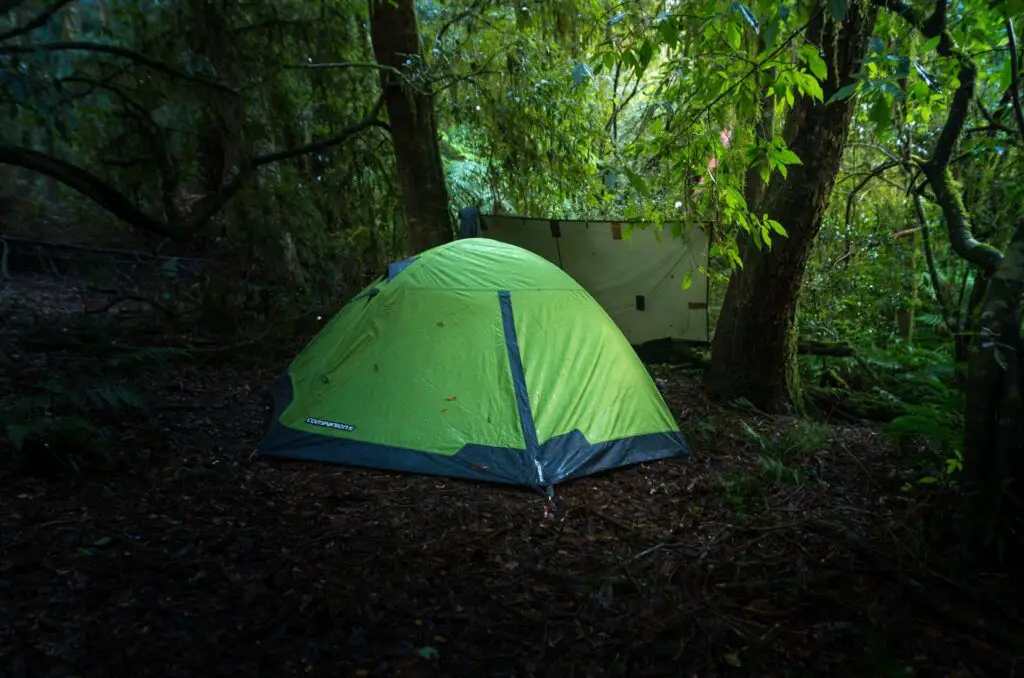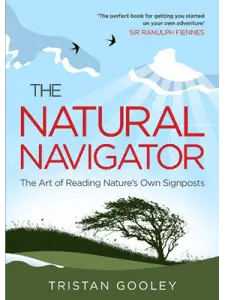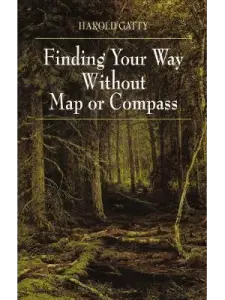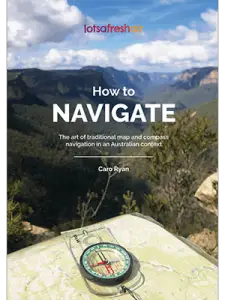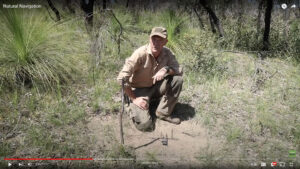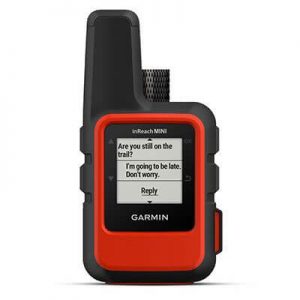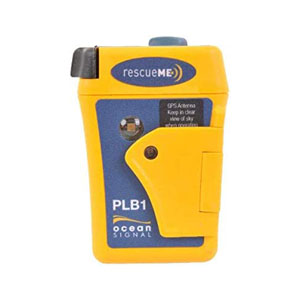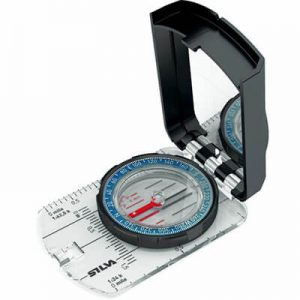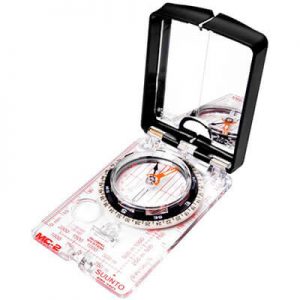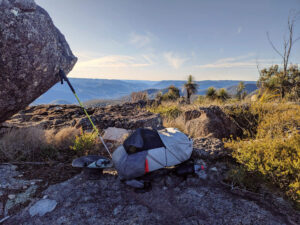Wild camping or bush camping is a term used by hikers when camping away from designated campsites in national parks, reserves and state forests. Many reserves and parks will allow self supported walk-in wild camping throughout the year.
Wild or bush camping in Australia is a fantastic way to be more self reliant, explore new environments, and understand how we interact with nature.
But it’s hard to know what’s allowed, how to safely enjoy the Australian bush, and what restrictions are in place to protect the environment and limit our impacts.
So I’ve asked leaders in wilderness survival, bushcraft, conservation and the Australian bush for their advice on getting started with wilderness camping.
Here’s what they’ve shared so you can get started.
Table of Contents
Disclaimer
Some of the links below are affiliate links, which means that if you choose to make a purchase, I will earn a commission. This commission comes at no additional cost to you. Please do not buy these products unless you feel they will help you achieve your goals.
What is Wild Camping?
Not to be confused with stealth camping, wild camping is a legitimate and legal activity provided we take care of the environment and are aware of our limitations.
Wild camping, also called bush camping, is all about experiencing a closer connection with nature by being more self reliant and using our skills and knowledge to camp safely without infrastructure.
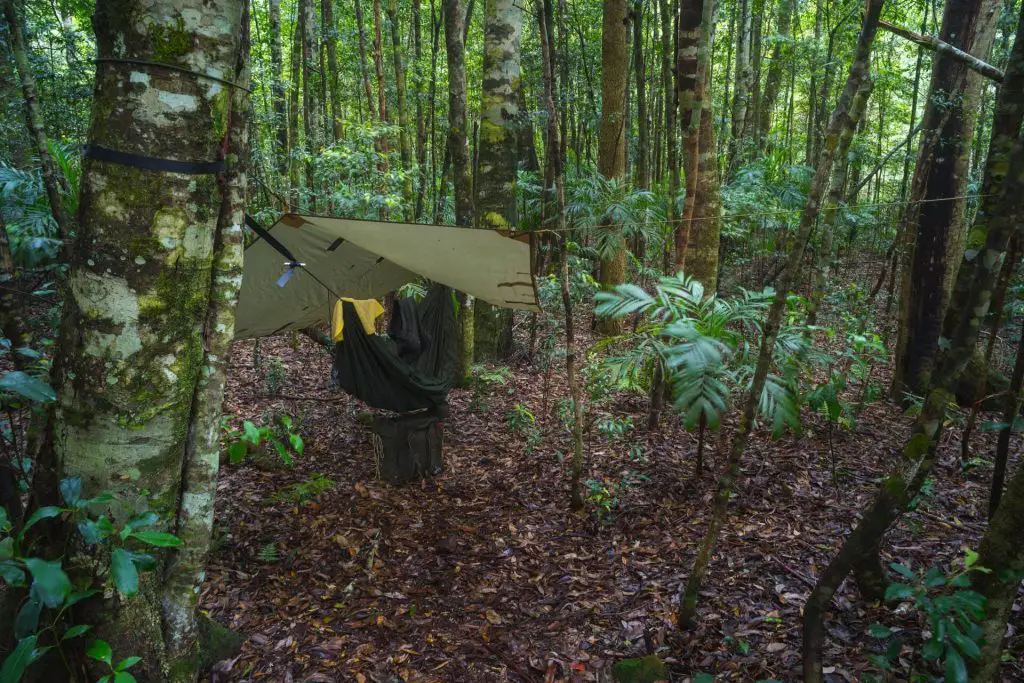
Wild camping normally takes place in remote environments away from modern comforts such as technology, campgrounds, roads, trails or other facilities. Unlike glamping or car camping which are popular in Australia, wild camping relies more on your experience and skills to stay comfortable.
With only what’s on your back and your bush skills and experience, you are able to deeply immerse yourself in locations and environments that will leave you inspired, rewarded and fulfilled.
In Australia there are different regulations on wild or bush camping for each state, park and reserve. These restrictions exist solely for the protection of what little wilderness areas we have left, and the flora, fauna and ecosystems that exist within them.
This is a good thing, but it can make it difficult to find wilderness areas that allow wilderness and bush camping.
Meet The Guides
I asked leaders with experience in the Australian wilderness to share their knowledge and concerns on wild camping from different perspectives. Here they are!
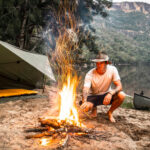
Scott Williams
Wilderness Explorer & Videographer
Scott Williams is a professional photographer and videographer based in NSW, Australia.
Scott grew up in and around nature, but has been heavily involved in learning and sharing his wilderness camping, wild edibles and bushcraft experience over the last few years.
Scott also films and shares his trips through his popular YouTube channel, Scotty’s Gone Walkabouts.
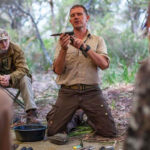
Gordon Dedman
Australian Survival & Bushcraft Instructor
Gordon Dedman is a highly skilled and experienced bushman and trainer with an extensive military and survival background.
Gordon is a student and practitioner of leading bushcraft educators such as Dave Canterbury, Paul Kirtley and Ray Mears. He has trained extensively to adapt his experiences to the Australian bush and its unique environment.
Gordon runs the highly regarded Bushcraft Survival Australia School which is dedicated to teaching genuine and authentic outdoor living skills for the Australian wilderness.

Phil Redpath
Terrestrial Ecologist
Phil Redpath is an avid outdoorsman and terrestrial ecologist with over 30 years experience working in natural resource management, bush fire management, planning and fire ecology and a teacher of Terrestrial Ecology.
Throughout his career he’s also worked with NSW National Parks and Macquarie University in environmental management, regulation and conservation.
Phil’s field experience with threatened species, monitoring, and the study of habitats gives him a strong depth of knowledge of unique and at risk Australian ecosystems.
Wild Camping in National Parks
Each state in Australia operates their own statewide parks and reserves, and these will often be the most common way for Aussies to experience the bush.
While each state and park will have its own designated and permitted activities, these are documented in the Plan of Management for most wilderness areas across Australia.
Plan of Management
When choosing your park or trail, check for any legal restrictions or warnings that may impact or stop your wild camp trip.
The ONLY way to do this is to go directly to the authorities. Don’t listen to other hikers and campers, get first hand information.
The Plan of Management will declare activities that are allowed. Examples might include wild or bush camping, self supported hiking, low impact camp fires, off trail camping etc.
These are invaluable for planning your trip and figuring out what you can and can’t do.
Plan of Management Archives
- NSW Parks Management Plans
- QLD Parks & Forest Management Plans
- NT Parks Management Plans
- VIC Parks Search
- SA Parks & Wildlife Management Plans
- WA Parks & Wildlife Management Plans
- TAS Parks & Wildlife Management Plans
If you can’t find a planning document or it doesn’t answer the questions you have about a specific park, call the rangers directly – they may be able to recommend less sensitive areas that are more suitable for wilderness camping.
Navigating the Bush
Some navigation skills and experience will be needed to safely navigate the Australian bush and should not be underestimated. Not knowing where you are or how to get home results in tragedy for both experienced and amateur hikers every single year.
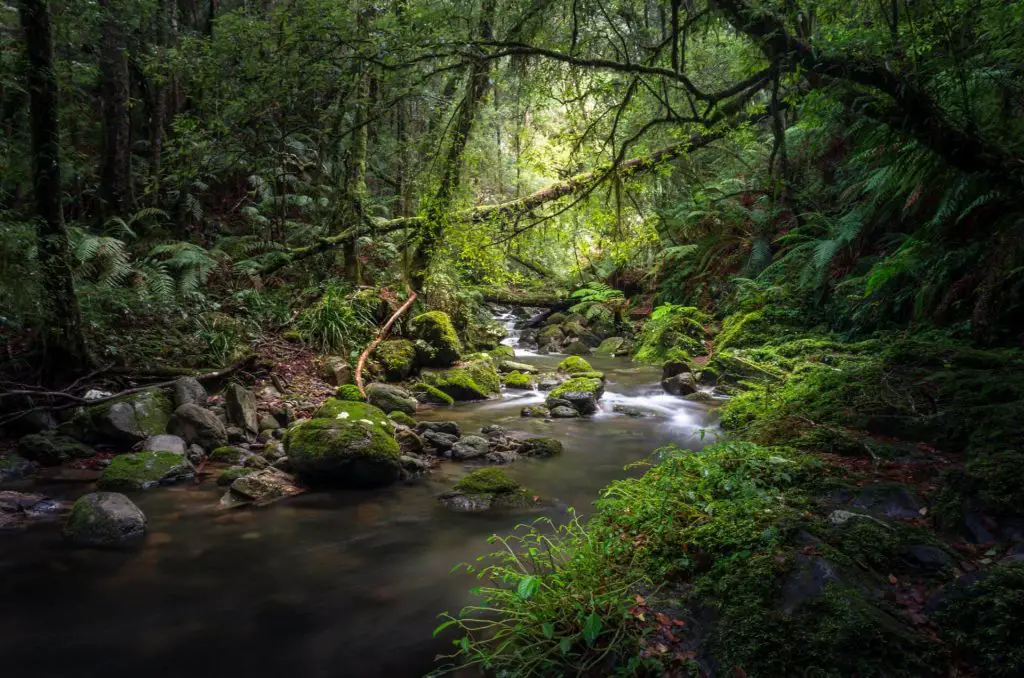
But there are a number of ways to find your way more safely, whether you’re just starting out or venturing off trail, as Gordon Dedman explains.
Of course having the skills to use tools like a map and compass takes time to learn, but they are essential when navigating off trail. There are GPS trackers and other devices which are good for checking your position, but shouldn't really be used to plan and tell you where to go. And they can fail in various ways.
So first, yes you need to teach yourself to use a map and compass or do a course to learn those skills.
In addition there are various ways to use natural navigation to identify your cardinal directions, or following water courses. Natural navigation is a great way to start learning even on marked trails because it's enjoyable to find and identify these things without getting too technical.
Natural navigation will naturally force you to pay more attention to your surroundings and give you a good second and third method of orientating yourself for less detailed terrain.
You can start out by navigating map to ground on marked trails, and lining up features and trails as you come across them onto the map. And you'll learn also contour lines and elevation and all those things from the relative safety of a marked trail.
Orienteering is another really good way for many people to start and there's lots of groups that run orienteering in most cities.

Recommended Reading
Recommended Watching
Safety Precautions
Day hikers represent the majority of rescues and emergency situations in wilderness areas across Australia because they don’t account for incidents that may cause them to be in the environment for longer than their planned activity.
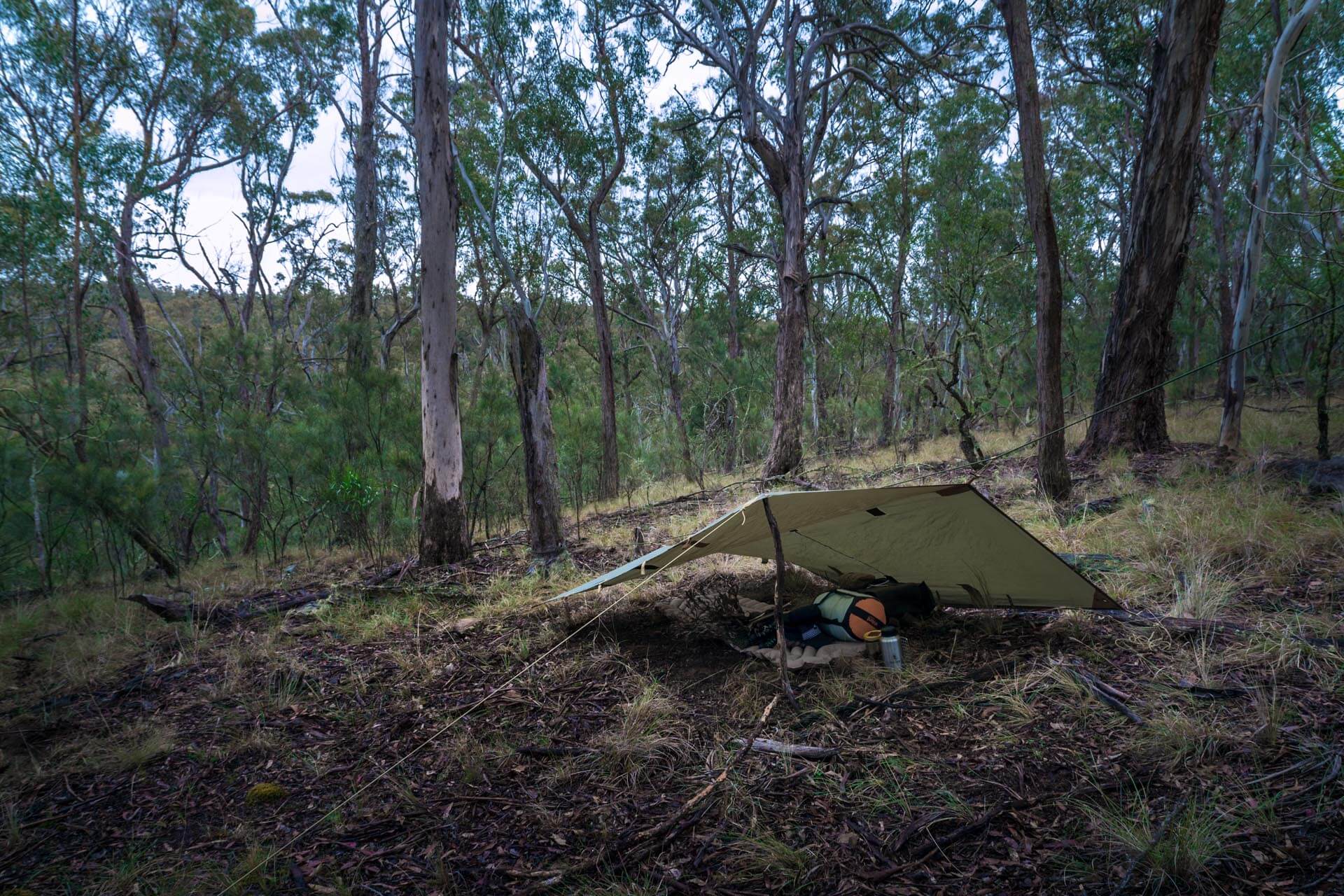
When wild camping we often have more equipment with us, but being off track and in remote areas for an extended period of time introduces significant risks to our safety.
For this reason it is critical to have some fundamental equipment, skills and forethought to be better prepared and to ensure our safe return.
1. Plan Ahead
Know where you’re going, how you’re getting there and how long you’re planning to stay. You should also consider alternative campsites along the way in case there’s an incident, access issue or change in conditions.
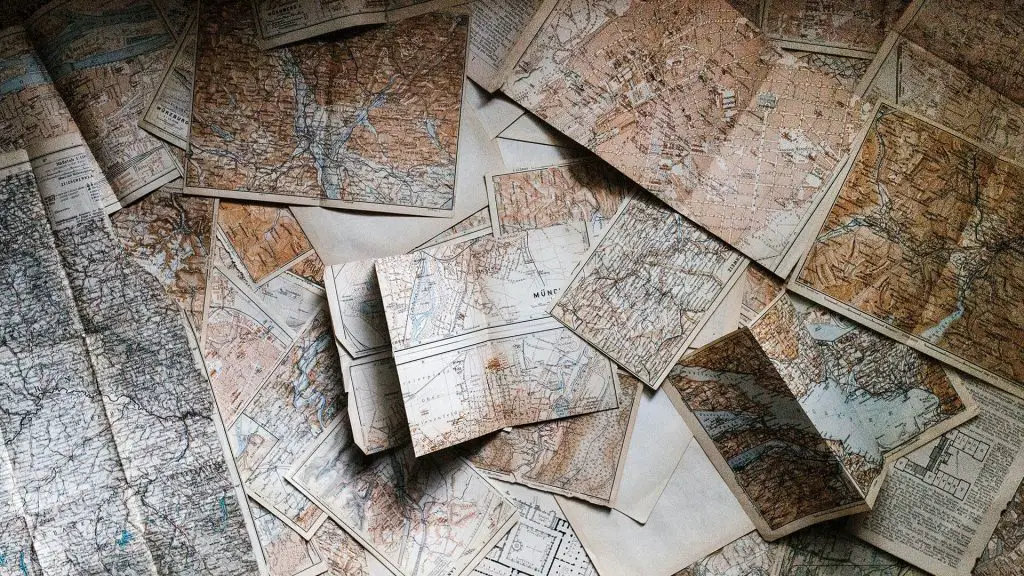
Your plans need to be written down with estimated times for major checkpoints, getting to camp and expected return. You should also include an estimated “alarm” time so if no one has heard from you they know to notify authorities immediately. This could be anything from a few hours or a day or two past your expected return time depending on your location, trip length and experience.
2. Inform Others
Make copies of your trip plan and give them to family members or friends so they know where you are and your planned movements. They will be responsible for calling in help should you not make contact before your “alarm” time.
You can also register your trip intention with most National Parks offices, as well as local authorities before you head out.
Search for trip intention forms for your park or state to find these.
3. Carry a PLB or EPIRB
A PLB (Personal Locator Beacon) or EPIRB (Emergency Position Indicating Radio Beacon) is a must have item for anyone venturing into the Australian wilderness. This device will allow you to notify emergency services that you need immediate assistance, and can inform them of your location.
4. Adequate Shelter
In a remote emergency or survival situation you must be able to survive and maintain your core body temperature long enough for help to reach you. This can take many hours or even days, as evidenced by any media report of search and rescue missions in bushland.
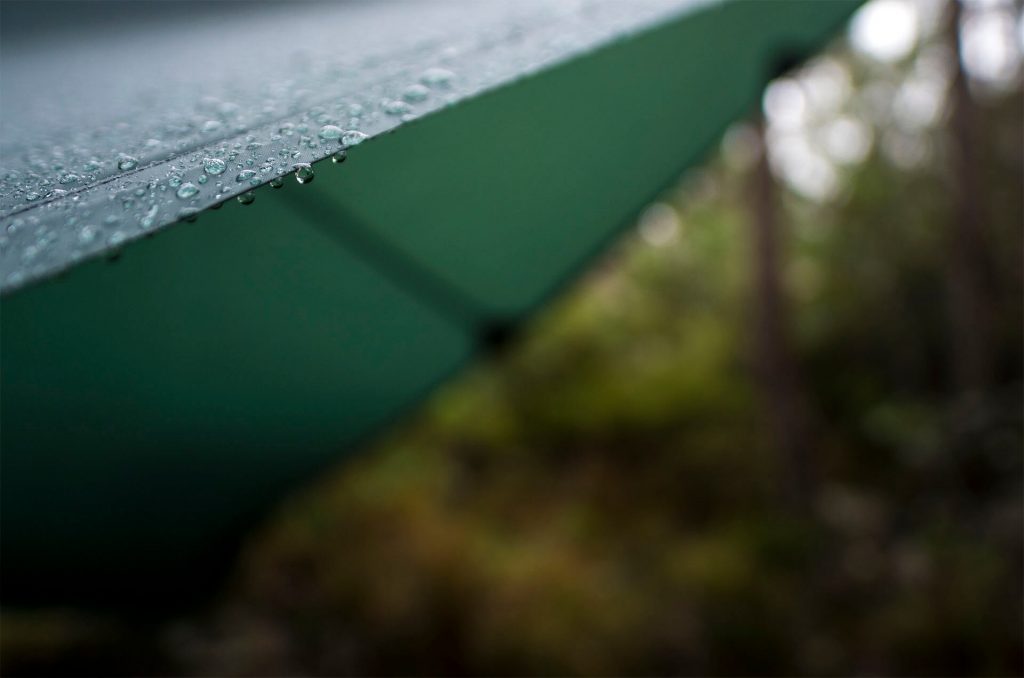
Shelter starts with the correct and appropriate clothing on your back, coats, rain jackets, may include emergency blankets and tarps, all the way down to the skills and tools required to construct your own shelter or fire.
5. Water & First Aid
Water is critical for any activity, but more so when you venture into the Australian bush as you can’t rely solely on natural water sources to be full, clean or accessible.
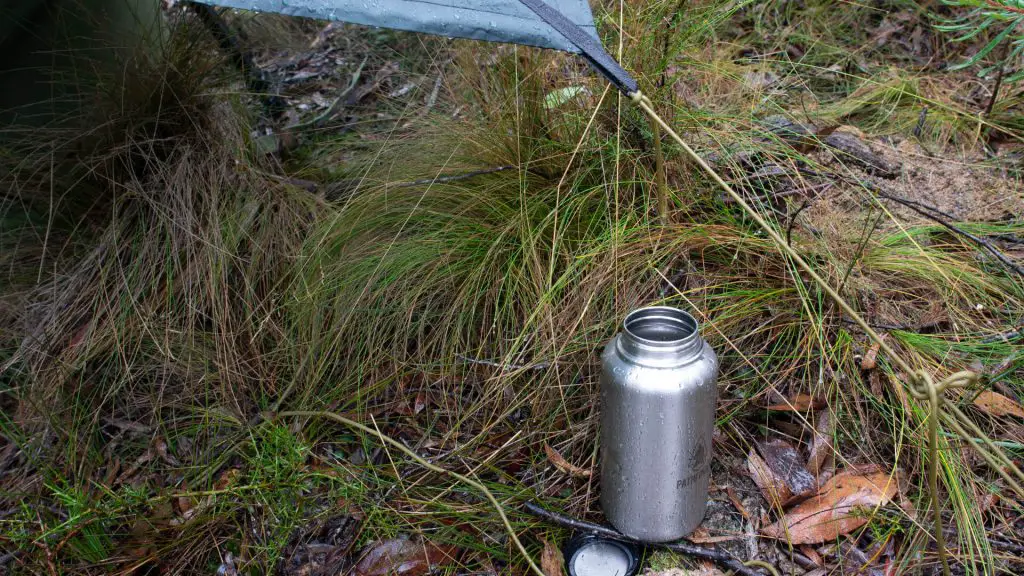
It’s important to carry more than enough water for you hydration, as well as for cooking any meals at camp. Along with this you need an adequate water filtration method that you know how to use so you can top up on clean water as you come across it.
First aid kits should include water purification tablets and a customized list of equipment to suit the environment and duration of your trip and the risks you need to manage.
A good first aid kit list to get started is this one from Australian Hiker.
A great video from Gordon Dedman on snake bite first aid can be watched here.
6. Know Your Limits
We all have physical and mental limits, and these can change when you’re out on location in the Australian bush. Don’t let your ego get in the way of your safety. If you feel uneasy, are unsure or come up against an unexpected obstacle take a moment to reassess and adapt your plan, or head home.
Both Gordon Dedman and Scott Williams have had experiences like this that have served as lessons for their future trips.
A few years ago I was in Alaska with some friends on a mountain in summer, and the weather changed really, really fast. So we got really cold, and the others hadn't taken any wet weather gear.
I lent them mine, so I ended up cutting a hole in the garbage bag from my pack and putting that on to try and keep the wind out. We were halfway up this mountain and really cold, and it got to the point I couldn't do the hypothermic finger test.
I knew then "Okay, this is bad". If I can't do that, I can't do basic things. So I said we have to go down, and we couldn't have gotten a helicopter in with those wind conditions. We had to get down now.
It was that garbage bag that saved my arse because it stopped the wind, and that we were able to keep moving despite the freezing cold. If any of us had slipped coming down that mountain, that would have been a different story.

A couple of years ago I was on my first real solo adventure. I spent five days hiking through the Budawangs. It was all going well and I was absolutely loving it.
Then on the second last day, I made a really poor error in judgement and got myself 'geographically embarrassed'. I didn't have any GPS and was relying on map and compass. During my scramble to figure out where I was, I somehow lost my compass.
This lasted the entire day so I returned to the cave I had slept in the night before to get my bearings. That night was tough. I felt so out of my element and I was pretty close to setting off my PLB as my partner was meant to pick me up the next morning and at this rate there was no way I was going to make it back in time.
I slept it off and the next morning I pulled myself together, found the right track and made it back to the carpark just in time for pickup. I've never felt more defeated and it was a huge learning curve.

7. Pay Attention to Conditions
Even with all of the preparation, skills and safety precautions we take when planning a wilderness trip, there are times when nature demonstrates a higher risk that should not be ignored.
Many people are aware of the catastrophic impacts of the 2019/2020 wildfires across eastern Australia.
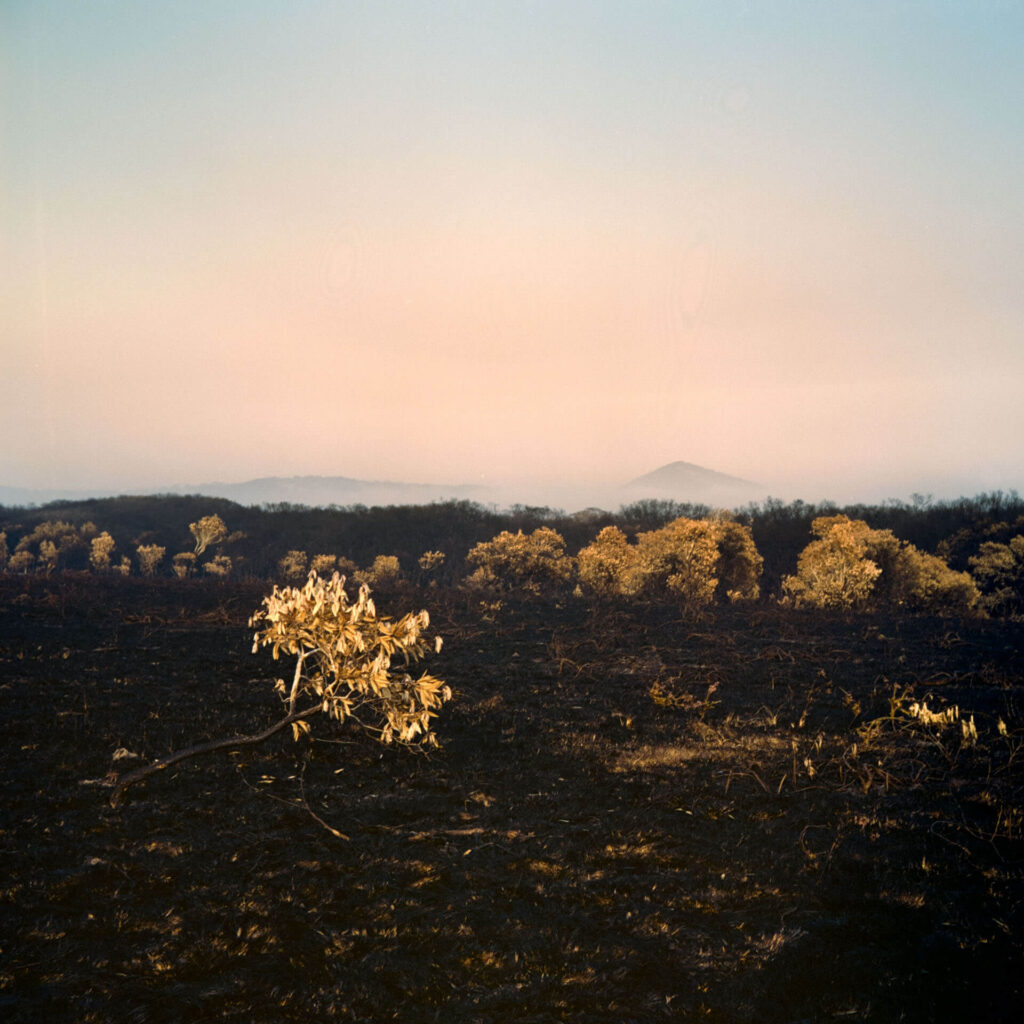
However the conditions which lead to that disaster were present well before everything ignited. The same conditions and triggers are also present for other dangers in the wilderness including heavy rainfall and flash flooding, rising creeks and rivers, freezing stormfronts, drought, wildfires and severe temperatures.
During your research and experience hiking and camping in wilderness areas these trigger scenarios will present themselves to you.
Be aware of the conditions and the risks, and consider turning back before things turn dangerous or deadly.
We found that during 2019 when we went on our treks the ground was so dry and what leaf litter was present was so brittle that the slightest spark could have been incendiary.
We also noticed how much heat radiated from the vegetation and ground. It was blistering. Given that our forests comprise mainly Eucalypt or Myrtaceous species and the Blue Mountains get their colour from vapourised eucalyptus oil, we could sense the volatile nature of our immediate atmosphere and made a conscious decision to stop our walks.
If you are going to embark on a cross country trek, check the weather conditions.
If there are rainfall events predicted, don't camp near creeks, streams, rivers or wetlands.
If you're in severe drought conditions, don't risk it with open fires. Fire spotting can occur up to 30km ahead of the fire front, and your chances of outrunning a fire are slim to none.

Finding a Bush Campsite
Once you’re out in a remote location it’s time to find a suitable wild campsite. Unlike the manicured campgrounds in most National Parks and camping sites, you probably won’t have the luxury of clear, flat ground and open skies.
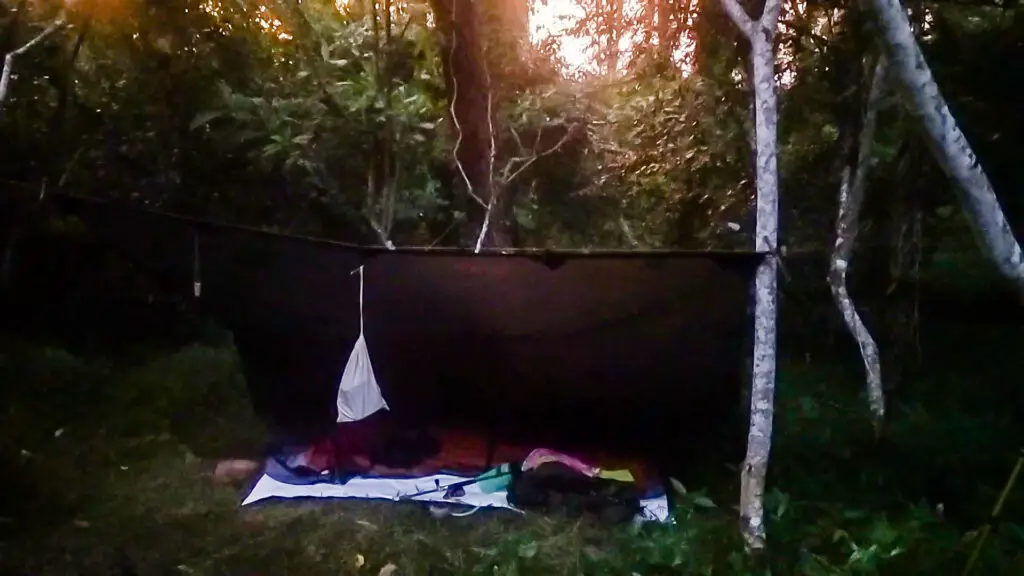
So there’s a few important things we want to look for, with some thoughts on finding the ideal wild campsite below.
- Look for a campsite amongst the bush for some protection from the elements
- Find some flat, even ground large enough for your shelter
- Look up to check for overhanging branches or falling dangers
- Check around your campsite for game trails or ant nests to avoid those
- You want to be nearby a water source, but not too close (a short walk away is ideal)
- Avoid mountain peaks, or deep valleys especially in cool weather
Look up, look down and look all around.
You're looking up for deadfall and windowmakers, anything that can come crashing down on you. This includes trees that may be dying or rotting, or in a waterlogged area you can see trees may lean or slip roots with a risk of upturning and coming down.
Find flat, even ground and don't set up on or too close to game trails where you'll have wild animals coming upon you during the night. Check for ant nests!
Temperature is important. In cooler weather you want some protection so avoid being exposed on top of a hill or ridge line, but you also don't want to be in the bottom of a valley because cold air sinks, even in a localized depression this can be felt.
You want to find a campsite in the woodland or forest, not exposed in a clearing so you get that natural wind, sun and rain protection.
Don't set up too close to water, some reasons are for limiting mosquitos and contamination from your camp, but also in a survival situation running water can prevent you from hearing rescuers.

When looking for a wild campsite access to water is high on the priority list for me.
It's not just for drinking water, having access to water helps so much in keeping a clean camp ie. washing dishes (with no detergent!) or freshening up in the morning. If possible, always try and camp a distance away from the water source, ideally 30 metres or so.
In a perfect world, you'll want to camp on clear and level ground which can be very tricky at times. If you're bushwalking in sandstone country this can be even trickier as you also have rock to deal with and if you need to drive pegs into the ground. Improvise by tying the guy lines around rocks.
Safety is a priority and as much as we all love our gum trees, they have a habit of dropping branches. They have the nickname 'widow maker' for a reason. So when selecting a site look up and around and make sure there are no precarious limbs hanging over your camp.
As well as looking up, also look down. Australia is home to some pretty angry bull ants and if you camp near a nest on Jack Jumpers, you'll sure know about it.

Phil Redpath made special mention of the dangers of setting camp too close to water sources, and to ensure you are aware of the dangers of the environment and terrain in relation to rainfall, rising waters and flash flooding.
Water should be close enough for you to be able to collect for drinking and cooking, but planning your camp a few hundred metres away from waterflow areas is safer, quieter and reduces the risk of pollution.
In the 1990's I was part of a team undertaking a remote area fauna survey near Drake in North East NSW. We chose a campsite on top of a bank of a trickling creek and some of us put our tents down on a flatter bench a few meters above that creek.
We knew wet weather was coming, but had not bargained on a significant rainfall dump higher up in the small catchment.
I awoke at 2am to the sound of what turned out to be large river stones and boulders being tumbled down that 'trickling' creek. I looked outside the tent to find water lapping at my tent.
I rushed out and woke my colleagues and we moved our gear with minutes to spare before a large surge of water swept through where we were sleeping. It pays to pay attention to the weather and bear in mind how quickly circumstances can change.

Wilderness Campfires
Fire in National Parks and the Australian wilderness is a contentious issue, and for good reason. Poor fire management by hikers and campers has often resulted in devastating bushfires which have decimated large areas of wilderness, farmland and towns.
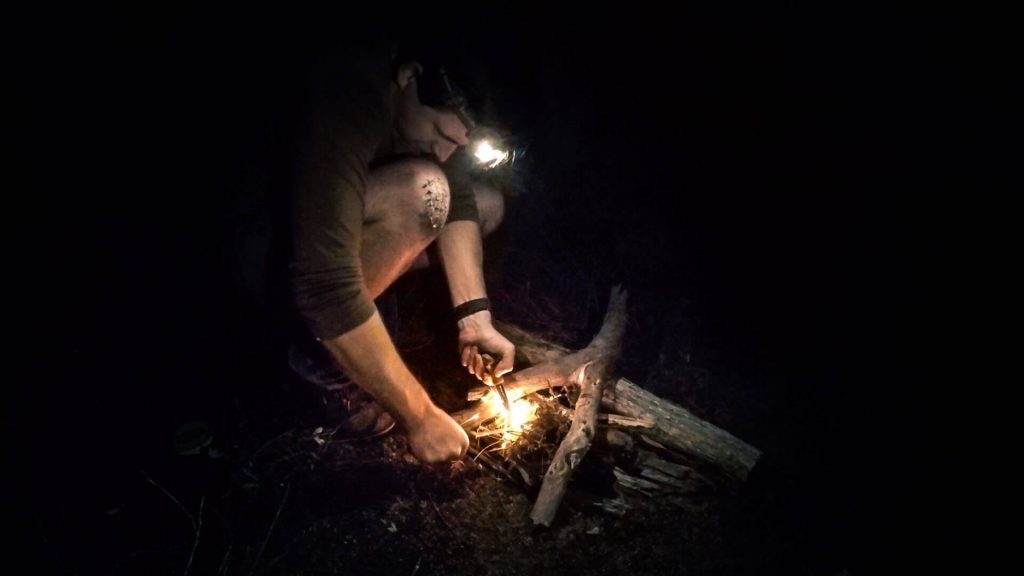
However even with a sound knowledge of firemaking, the act of firewood collection in these remote environments can also have long lasting impacts on the fauna in these areas.
This is one reason why National Parks often provide or request visitors bring their own fuel with them, to limit our impact.
The overall message from our wild camping experts is mostly consistent, see their responses below.
- Where possible, use a stove over a campfire.
- Keep your campfire small, enough to boil some water or cook a meal is all you need.
- Collect your firewood from a wide area or as you hike in so your impact in one location is reduced.
- When looking for dead standing timber, avoid disturbing barked trees, fallen logs, trees with hollows and other structure animals and insects could be using.
- Spend time preparing your fuel and tinder, all the work happens before the spark.
- Clear the earth around and under your fire.
- Never light campfires in drought, hot, or windy conditions.
- Properly and thoroughly extinguish your fire, scatter the remains and return the campsite to its original site. No one should know you were there.
My preference would be to see the use of stoves rather than fires, simply because it's really easy for fire to escape.
The issue of collecting firewood from an ecological perspective is in how it impacts habitats on a local scale. Those impacts really depends on how many people are doing it and what sort of environment you're in.
A range of studies and research indicate that the presence of a range of micro habitats are likely indicators of the presence of a higher diversity of fauna inclusive of threatened and endangered species.
Micro habitats include fallen logs, hollow bearing trees, cracks and crevices in rocks, bark shedding trees and shrubs, multiple structural layers (eg ground, shrub, understorey and canopy), and old growth trees as examples.
So firewood collection even at a small scale can have a considerable impact on these habitats that support a variety of important species.
For minimizing the affects of collecting firewood you need to be aware of those impacts.

Campfires in my opinion, when done correctly, are no issue.
The biggest problem we have here in Australia is people aren't taught how to have a safe fire. I believe if we learn how to manage fire, extinguish it properly and to respect it, it is quite safe.
My tips for campfires are to clear a two metre perimeter around the fire. Keep it small. Use only fallen timber that isn't a potential home for an animal.
To extinguish, poor water on the fire and with a stick, thoroughly mix the coals and ashes till you create a slurry. If you don't have access to water, mix dirt or sand with the embers. Return the area to it's natural state.
If it's hot, dry or windy, best to not have a fire.

You don't have to use it, but practicing and knowing how to prepare tinder and create a fire in all conditions is really important for a survival situation.
Fire is everything. Fire is clean water, food, warmth and comfort. It is also safety and a signaling device if you're in an emergency situation.
Knowing how to identify fuel and tinder, process it safely, and manage low impact campfires is really important especially if you're in a remote location.
You always want to clear the ground to bare earth so we aren't igniting any organic matter or roots. Prepare your tinder in advance and take your time, don't rush.
Once you've finished with your fire ensure you extinguish it properly and re-cover the earth as close as possible to its original state.

Recommended Watching
Leave No Trace
Leave No Trace builds awareness, appreciation and respect for our natural and cultural heritage by limiting our impacts on the natural environment. There are seven common LNT principles we must follow when wild camping and exploring wilderness areas.
- Plan Ahead and Prepare
- Travel and Camp on Durable Surfaces
- Dispose of Waste Properly
- Leave What You Find
- Minimise Campfire Impacts
- Respect Wildlife
- Be Considerate of Your Hosts and Other Visitors
In addition to these there are also some more specific things we can do to minimise the our impact when wild camping below.
1. Bush Toilet Etiquette
If you’ve not been wilderness camping before, you may be used to toilet facilities of some type at most campgrounds. When you’re in a remote location, you need to make your own toilet and this can be a learning curve.
Gordon Dedman has a fantastic video on bush toilet etiquette with some options and tips to make this experience more comfortable and considerate while out bush.
2. Off Track Impacts
Phil Redpath had some thoughts on our impacts when exploring off track in remote areas that we should be aware of when deciding how to navigate and get to wild campsites and explore these areas.
Creating new tracks can become a real problem from a pest perspective. Some examples include cane toads being introduced to new areas which are catastrophic to Australian wildlife, but then you've also got several species of fungus which can get in on the bottom of hiker's boots and that sort of thing.
Unless people are aware of those risks and the medium by which they are moved around it can be a problem going into new areas. Creating new tracks can also promote use by other people which further increases the impacts we have on those environments.
If you're using existing tracks the issue is mostly how many users there are, and the problems that they introduce such as weeds and invasive species which can be quite hard to manage.

Essential Gear & Skills
What you should become aware of in your trip planning are the skills and equipment required that will help you safely navigate, camp and enjoy the conditions at your designated site.
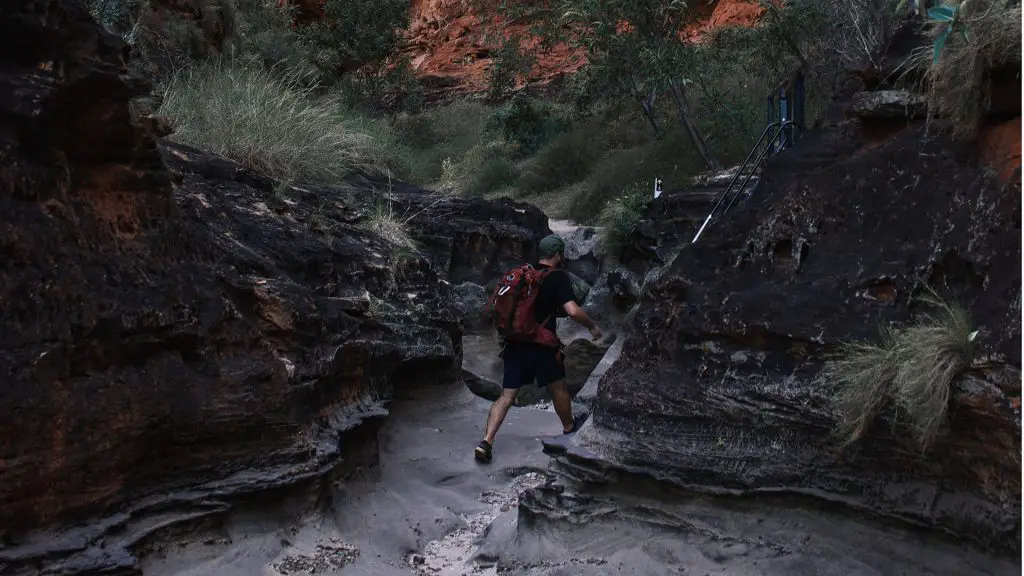
If you’re exploring wilderness camping from a day hiking background you will already have some of these, but not others.
If you’re new to the outdoors the learning and practice (before you go off trail) will be essential to your enjoyment and success, and should not be underestimated. Your life and safety should always come above everything else.
Here are some recommended skills, equipment and knowledge you should start practicing before your next or first remote camping trip.
1. Essential Survival Kit
It is critical that you carry the right equipment and have real world experience using this equipment to protect yourself from the elements. Some of these essential items may be covered by other gear we already own such as tents, cooking kits, etc.
But this is a bare minimum and Gordon Dedman explains really well the importance and use of each item when out bush.
Temperature control is everything. Proper clothing, head covering, warm clothes, shelter, fire making etc. It's all about maintaining your core body temperature.
You can go a few days without food or water in an emergency, but exposure can be dangerous within hours.
The temperature where we start to lose body heat to the environment is 26-28°C. Anything below that and we will lower our core temperature without adequate clothing and shelter.

Recommended Watching
Recommended Reading
2. EPIRB / Personal Locator Beacon
Everyone must carry an EPIRB or PLB when exploring remote and wilderness areas, as well as notfying someone where you are going and when you are expected to return.
Some devices can alert or communicate with authorities and/or family to some degree to let them know you are having an issue but are okay, while others only indicate an “emergency” to send rescue.
The expense of these devices are well and truly worth your life, don’t leave home without one.
Recommended Beacons
3. Compass & Navigation Skills
As mentioned previously in this guide, navigation equipment and skills are one of the most important aspects to off track exploration and wilderness camping.
A good quality compass allows you to stay on course when finding your way and is one of the easiest and most accurate methods of finding direction. A sighting compass will include a mirror that can also be used for first aid.
Recommended Maps
Recommended Compass
4. Water Treatment
Filtering and purifying water is an essential skill for wild camping, as you’ll be without access to clean drinking water for days at a time. You’ll need to verse yourself in the skills required to locate, identify and filter water from wild streams, creeks, puddles and flows.
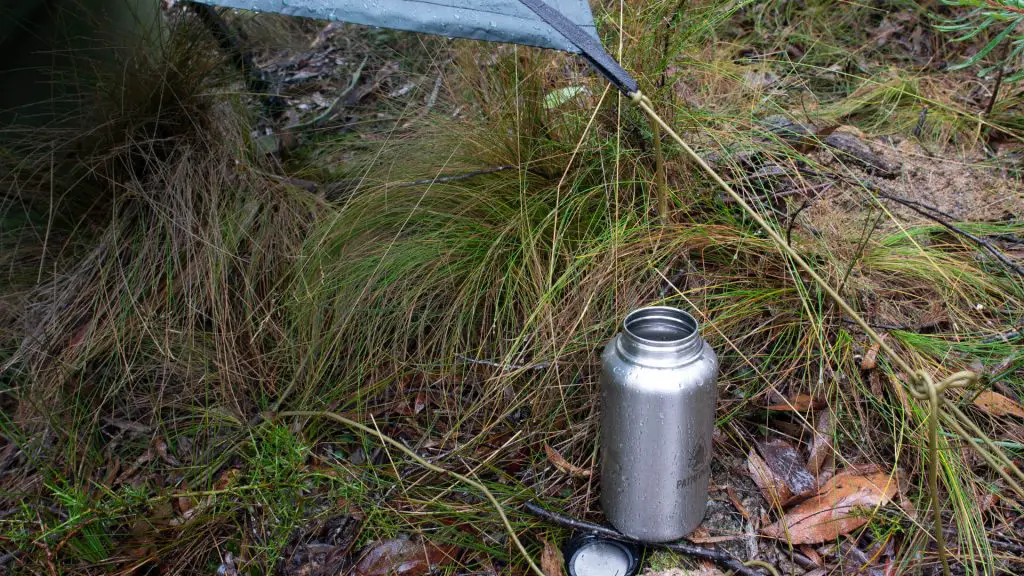
There are two stages to making water drinkable. We have to filter the water first, then we need to purify it. A lot of people think that just filtering is enough, but it’s not.
Filtering is the first stage and involves removing particulate matter with physical filtration. This may be done with a cotton bandana, shirt, millbank bag or water filter.
Once the particulates have been removed via filtration, you can sterilize water through boiling, water purification tablets, UV water purifiers or other purification device.
Water purification tablets can be purchased over the counter from most Pharmacies in Australia.
Recommended Reading
Recommended Watching
5. Clothing & Layering
Gordon Dedman has alluded to the important of shelter and maintaining your core body temperature from a survival and safety perspective in many of his comments. This also applies to the clothing you wear when wild camping, as this is the first layer of protection from the elements.
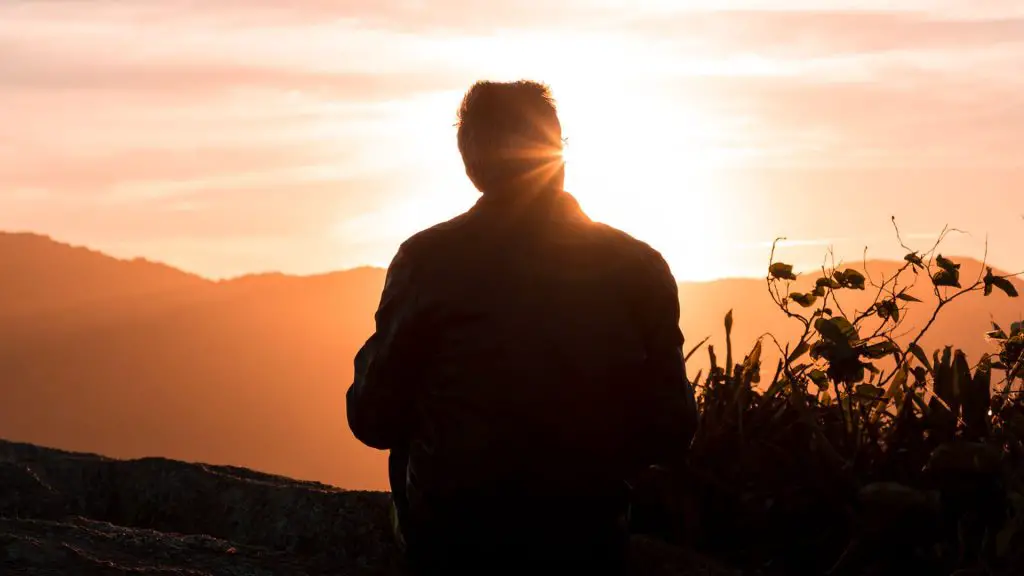
You need to experiment and understand the importance of layering your clothing to provide the best protection, comfort and performance when you’re exploring the outdoors.
The wrong materials like cotton can be lethal in cool or damp conditions, while synthetics have their place in outer wear, merino wool or wool blends are the best option for base layers in contact with your skin.
Included below are some recommended resources for learning how to better layer your clothing to start practicing on smaller walks and day trips to get comfortable with this approach.
Recommended Reading
Recommended Watching
Getting Started Wild Camping
So with all this knowledge and new skills, how are you going to put these into practice so you are confident, competent and safe for your first wild camping trip?
1. Start At Home
The good news is that most of these skills can be studied and perfected in the safety of your backyard. Schedule a night where you will sleep under the stars in your backyard and practice making a fire, setting up a shelter and purifying some water to see what you need to work on to get better.
2. Start in Campgrounds
If your backyard is lacking in resources or space, the next place to try your new skills safely is in a dedicated campground. This way you have access to your car, toilets, BBQ areas and firepits to fall back on should you have some difficulty in this new environment.
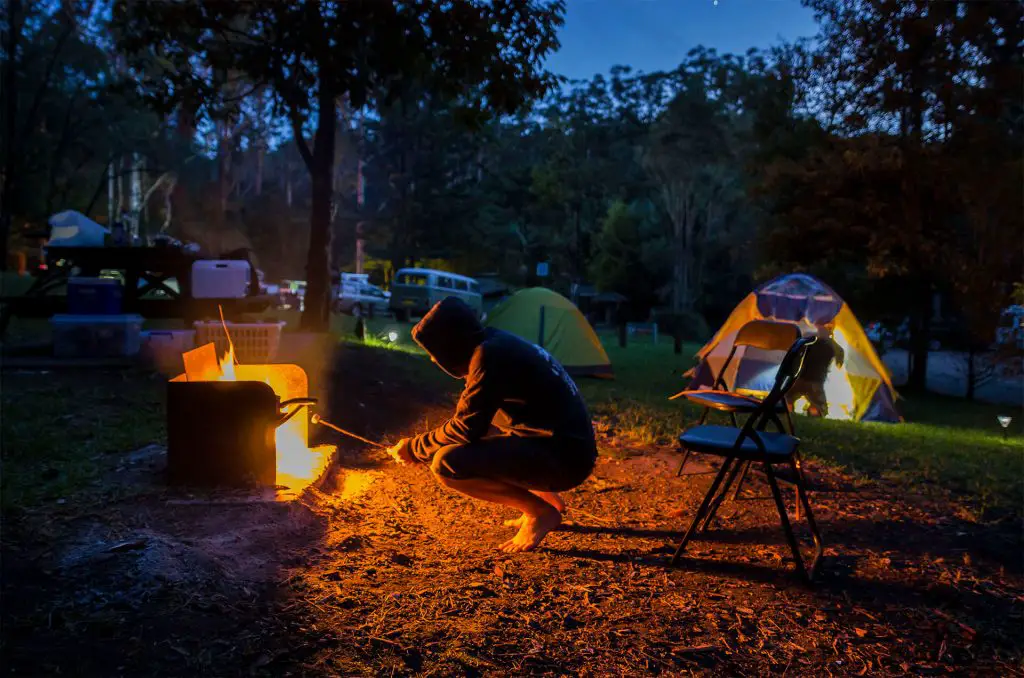
Navigation and map skills can safely be worked on along marked hiking, 4WD and fire trails for a morning walk, day trip or overnight hike. This will greatly reduce your chance of becoming lost, and the detailed maps, easier points of contact and presence of other hikers will reassure you while you work on navigating your way around.
3. Start Off Trail
If you’re a bit more experienced with a map and compass and have the relevant safety equipment and skills, an easy way to start off trail exploring is by following natural waterways. Find a creek or stream which crosses a marked trail in your local National Park or State Forest and follow it until the first intersection with another stream or obstacle. From here use your map and compass to orient yourself and figure out where you are before returning along the creek back to the marked trail.
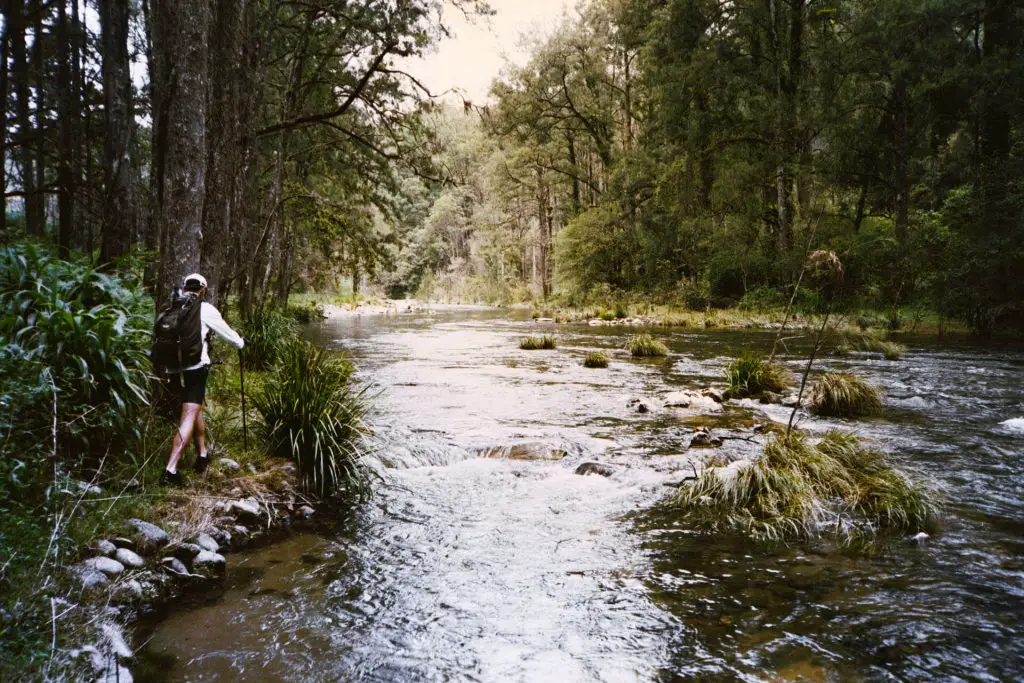
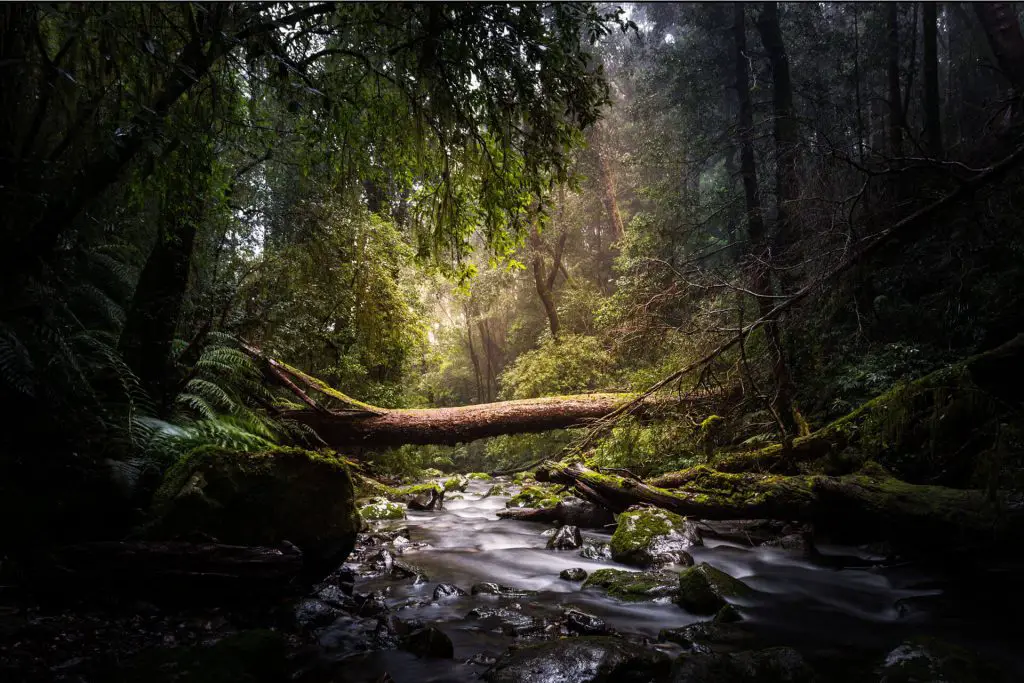
In the end these experiences will often be met with some discomfort, but don’t be discouraged. The experience andknowledge you build from wild camping is unlike anything else. Always put your safety before ego, always have a plan, and listen to your instincts. If you feel something is not right or you need to turn around, head back and try again another time.
Here’s some final words of wisdom from Scott Williams about how he started wild camping.
Our ability to head into wilderness areas and our connection to nature when wild camping is on a whole other level. So long as it's done sustainably and with minimal impact, it's a freedom that is worth fighting for.
Find an area that allows wild camping and look for existing campsites. Once you are comfortable camping in wilderness areas, then start to venture into new territory and experiment with finding your own campsite.
Remember, it can be tricky finding a suitable site, so best not to leave it too late in the day to find one as you may have to settle for something less than ideal.
And always leave no trace. If you hike it in, you can hike it out. Try and leave the area as untouched as possible.

Recommended Watching
4. Start With A Course
If you need extra support, have some gaps in your experience or knowledge, or want to fast track your skills the best way to do this is with a fully supported group training experience like Gordon Dedman runs at his Bushcraft Survival Australia school throughout Australia.
So why wait to get started?
Pack a bag and plan your first wild camping trip to envelop yourself in the true beauty of nature with an experience of a lifetime.
Wild camping can be a rewarding, safe, low impact practice away from designated campgrounds, trails and other campers so you can explore your limits and enjoy the outdoors!

